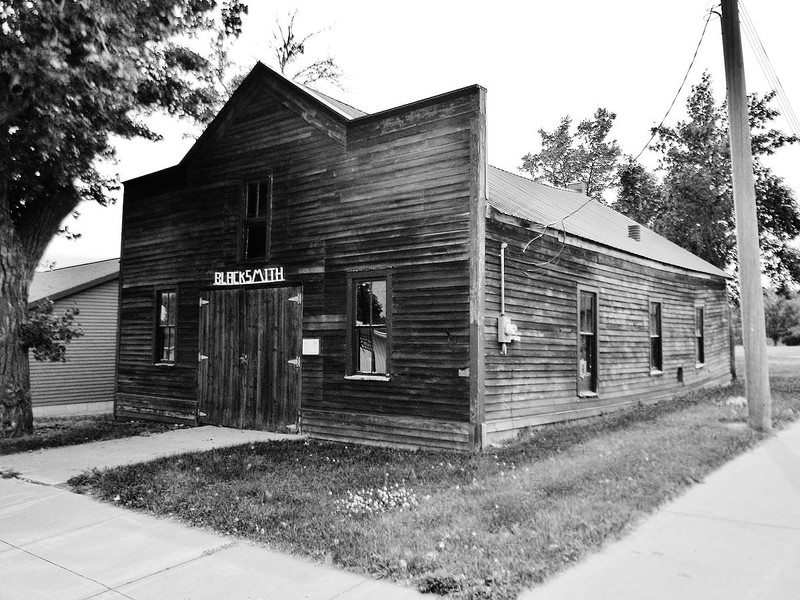G.L. Stocker Blacksmith Shop
Introduction
Text-to-speech Audio
Now located within the Dakota Sunset Museum, this historic blacksmith shop was originally constructed in 1901 by the Grand Army of the Republic and its women's auxiliary, the Women's Relief Corps. For a few years, GAR and WRC hosted movies, games, and dances here, but when these groups declined nationwide, the Gettysburg WRC sold the building in 1920. The building was purchased by G.L. Stocker, an Iowa-born blacksmith. By the time he closed his shop in 1970, Stocker had become a local celebrity for keeping his business alive for so long and was possibly one of the last in the country to practice his craft. After his death, the building passed to his son Worth, who donated the structure to the city due to its historical value. It was added to the National Historic Register in 1996.
Images
G.L. Stocker Blacksmith Shop

Backstory and Context
Text-to-speech Audio
The G.L. Stocker Blacksmith Shop is one of the first buildings in Gettysburg that was designed to host public meetings. The surrounding area is one of the earliest parts of town to be developed, and most of the buildings constructed initially here were put together during the 1880s and 1890s. Today the area has a diverse mixture of modern and historic buildings, some commercial and others residential.
This building was built in the summer of 1901 by the Gettysburg chapter of the Women's Relief Corps, an auxiliary group to the Grand Army of the Republic, an organization that was established by Ciivl War veterans. The building was initially called the Meade W.R.C. Hall and was used regularly for social and civic functions. Some Saturday afternoons and evenings, for example, the WRC served ice cream and cake to the townspeople here. Other times, they used it for basketball games and as a movie theater; at one point, they even had their own projection booth to use. The WRC used the hall less and less over the years, though, as the GAR and WRC organizations declined in membership. The building was vacant in 1917, and the WRC put it up for sale. In 1920, it was purchased by George LeRoy "Lee" Stocker, an Iowa native who made his living as a blacksmith.
Stocker ran the G.L. Stocker Blacksmith Shop for the rest of his life. Along with his blacksmith work, he also did metalwork, welding, and woodwork, services he offered to area farmers. In addition to this, he worked on wagon wheels and did some work on cars as the automobile became more popular. He kept his business alive through the Great Depression and the following decades by updating its services and facilities as technology grew. Lee Stocker finally closed his shop's doors in 1970, just a short time before he passed away at the age of 97. At this point, the shop permanently closed, with Lee's son Worth taking ownership of the old building, which he donated to the City of Gettysburg in 1993. In 2000, the Dakota Sunset Museum acquired the shop and today, they maintain the building and give tours free of charge.
Sources
CAN YOU HELP, RootsWeb. Accessed April 14th, 2023. https://sites.rootsweb.com/~sdpotter/stocker.htm.
Hufstetler, Mark. G.L. Stocker Blacksmith Shop - National Register of Historic Places Registration Form, National Park Service. March 1st, 1996. Accessed April 14th, 2023. https://npgallery.nps.gov/GetAsset/a84d8967-e962-4aa5-9b60-2db95c5eae8c/.
Wikimedia
